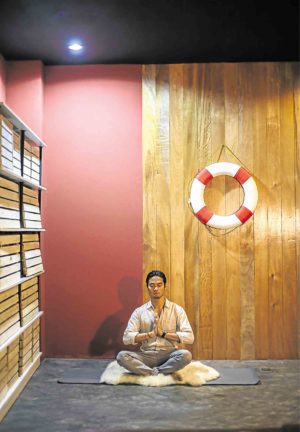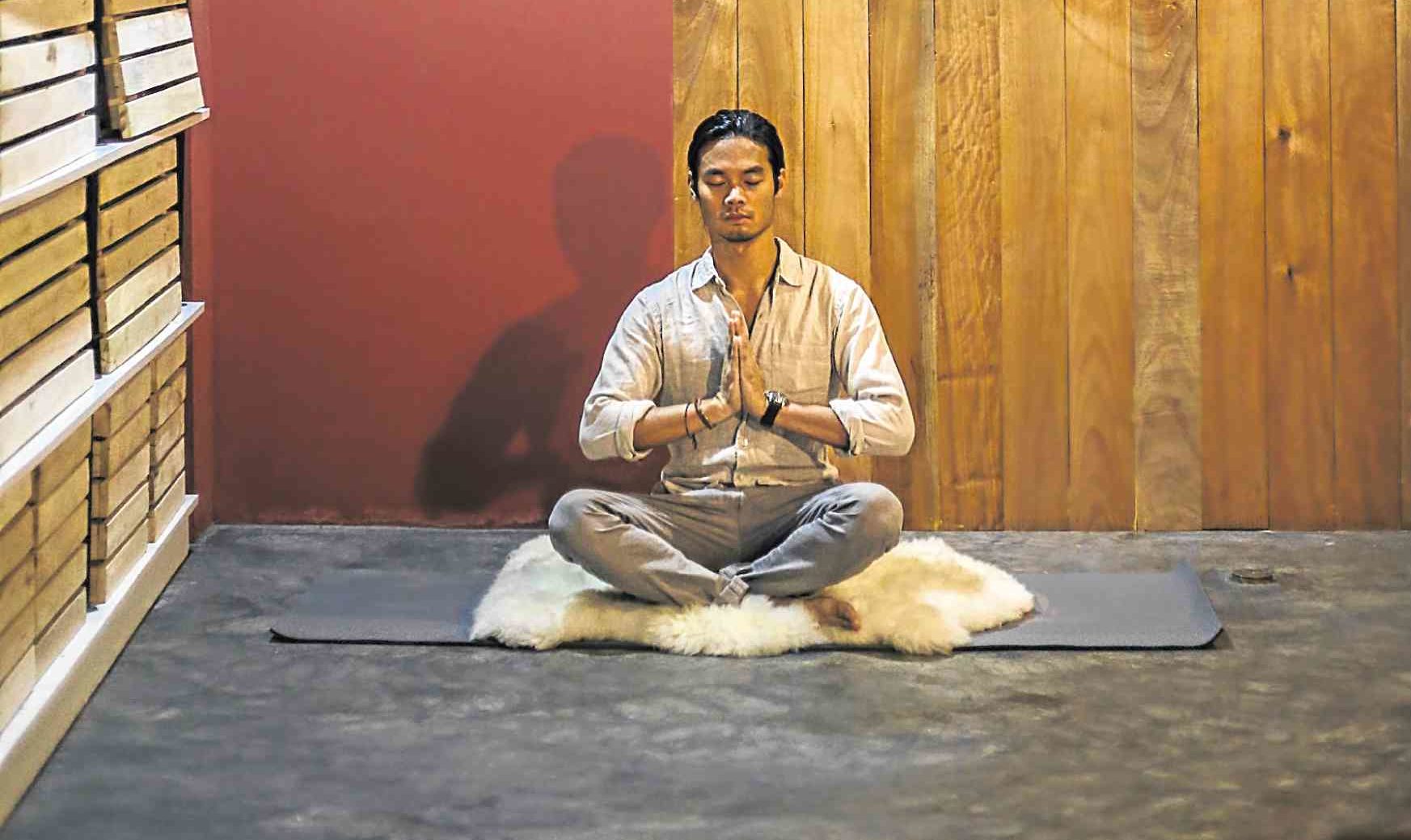
It improves flexibility, promotes blood circulation and strengthens the immune and nervous systems. But for Nicky Daez, 31-year-old director and managing partner of the full-service video production company Seabiscuit Films, Kundalini yoga calmed his mind and gave him a clear sense of what he was meant to do with his life.
Sanskrit for coiled snake, kundalini refers to the untapped energy found at the base of our spine. Specific poses, movements and breathing techniques called kriya help draw this energy up.
For centuries, Kundalini yoga was practiced exclusively in India until it was introduced to the West—first in Toronto, Canada, then in California, United States, by Yogi Bhajan in the late 1960s.
Today, the discipline known as “Yoga of Awareness” is offered in studios and retreats all over the world. It even has a celebrity following: actors Al Pacino, Alec Baldwin and Demi Moore have practiced it, as have supermodels Cindy Crawford and Miranda Kerr, and Queen of Pop Madonna.
Practiced in a room with no mirrors, and for the most part, with eyes closed to eliminate any form of self-consciousness, Kundalini yoga begins with participants chanting mantras, a “tuning in” of sorts to bring the group in the right frequency, explains Daez. This is followed by stretching of the spine to make the body limber.
Wide range
Kriya—from stretching, breathing, chanting and meditating, to jumping, running, dancing and yelling—takes up the majority of the class, which can run up to two hours. Given the number of kriya and the wide range of themes and issues to address, no two classes are ever alike. “The beauty of Kundalini yoga is that you’ll never know what’s going to happen,” says Daez.
A session ends in savasana, corpse pose. In the classes Daez attends, teacher Madonna English places lavender eye patches on her students and gives them a “gong bath,” striking the instrument to heal the group through sound.
In a discipline that tends to stir emotions (participants have been known to laugh or cry during classes), Kundalini yoga can be weird and different, concedes Daez. Still, since taking his first Kundalini yoga class three years ago, the filmmaker has always finished in good spirits. “No fail,” he swears. “I feel clear, happy and cleansed.”
It’s the opposite of what he was going through a few years ago, when he grappled with what he calls an existential crisis. Though business at Seabiscuit Films was good, his personal life was in a shambles.
“My marriage had just ended and I felt like a blazing fire had torched the safety net holding me up,” he wrote in an essay. “I was free falling into an abyss of melancholy.” Drinking and partying, once pleasurable distractions, no longer worked for him.
In desperation, he turned to his cousin, former Sunday Inquirer Magazine editor Karla Delgado, who invited him to attend a private meditation class. This led to his first Kundalini yoga session, a life-changing experience from the get-go.
“I never felt that kind of energy, that kind of stillness and connection by just meditating and moving your body,” he marvels.
Today, Kundalini yoga’s influence is very much apparent in his life and work. Daez observes that his latest scripts for the CNN Philippines show “Hungry with Chef JP” are deeper, more poetic than they were in the previous season.
“Even the way I approach filmmaking is different,” he notes. “Now it’s like, ‘What do we want people to feel when they watch it? What will this image convey?’ Everything is energy, and I realized that in some projects where I was just dragging my feet, the whole team could feel it. So now, when I’m doing a project, I need to put myself in a good place.”
Purpose
The discipline has also given him purpose and direction. Having spent two weeks in a Kundalini yoga program called Seva Sadhana held in Española, New Mexico, Daez—whose daily routine included waking up before dawn, working in the garden and kitchen, and cleaning the temple with his bare hands—believes he was meant for a life of service.
Besides coming up with quality content for his clients, he’d like to organize workshops for empowering kids, and a do-it-yourself film school for the less privileged to tell their stories.
“Since the experience in New Mexico, I’m always asking myself, ‘What can I do to help?’” he says.
And the existential crisis? That’s a thing of the past. “I think the remedy for that is to stop thinking of yourself,” he reflects. “When you’re too focused on ‘you,’ that’s when depression and frustration start.”
You don’t need to be a vegetarian to practice Kundalini yoga, says Daez, a meat eater. And it isn’t limited to a certain age or type, either: the growing community in Manila consists of Filipinos and expats from all walks of life, between the ages of 17 and 70.
Like all disciplines, Kundalini yoga takes time, patience and commitment to master. Daez, who struggled in his first three months of meditation, has progressed to the point that he led his first Kundalini yoga and meditation class for beginners on the day of this interview.
He’s also planning to go back to New Mexico in August 2018 to train as a teacher.
“It’s too good not to share,” he says. “The only requirement is an open mind.” —CONTRIBUTED
Kundalini yoga classes are offered at Urban Ashram Manila. Visit urbanashramyoga.com and Kundalini Yoga Manila kundaliniyogamanila.com.














































